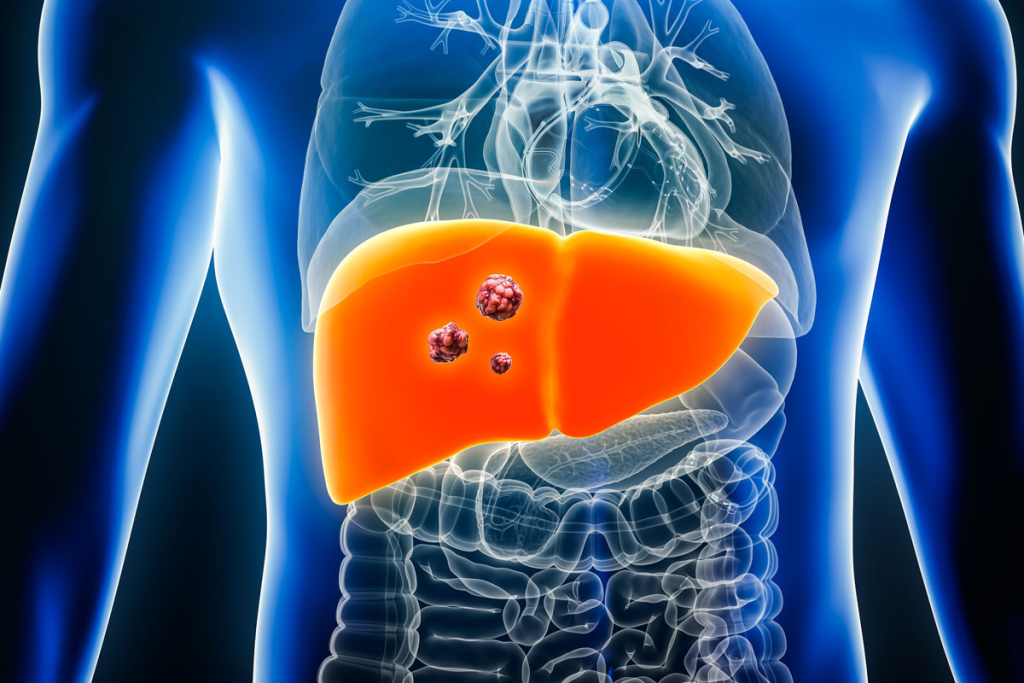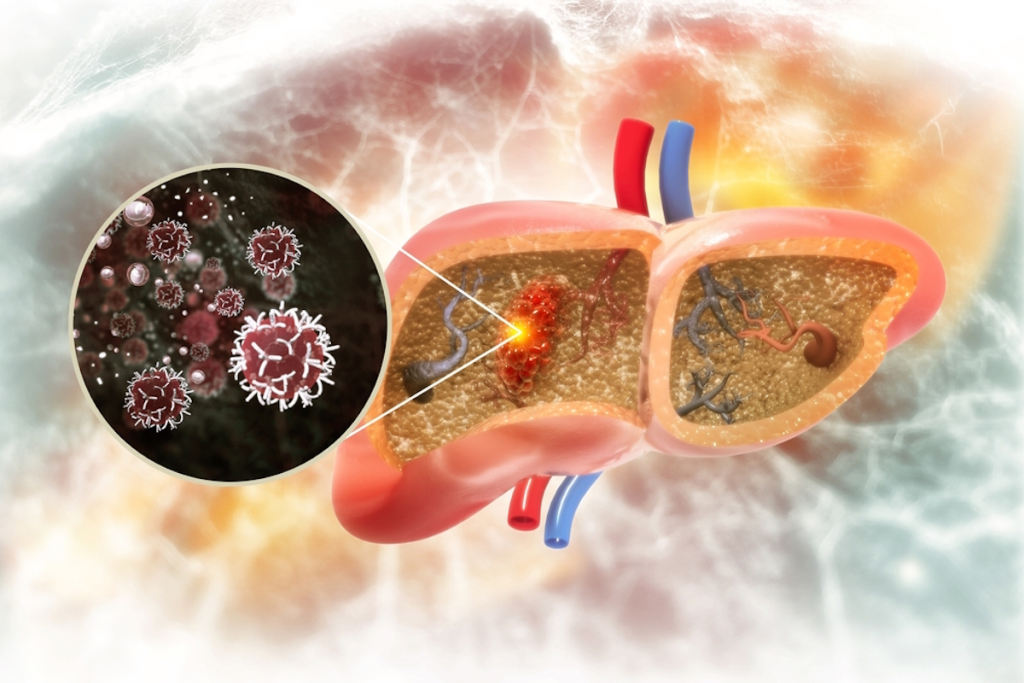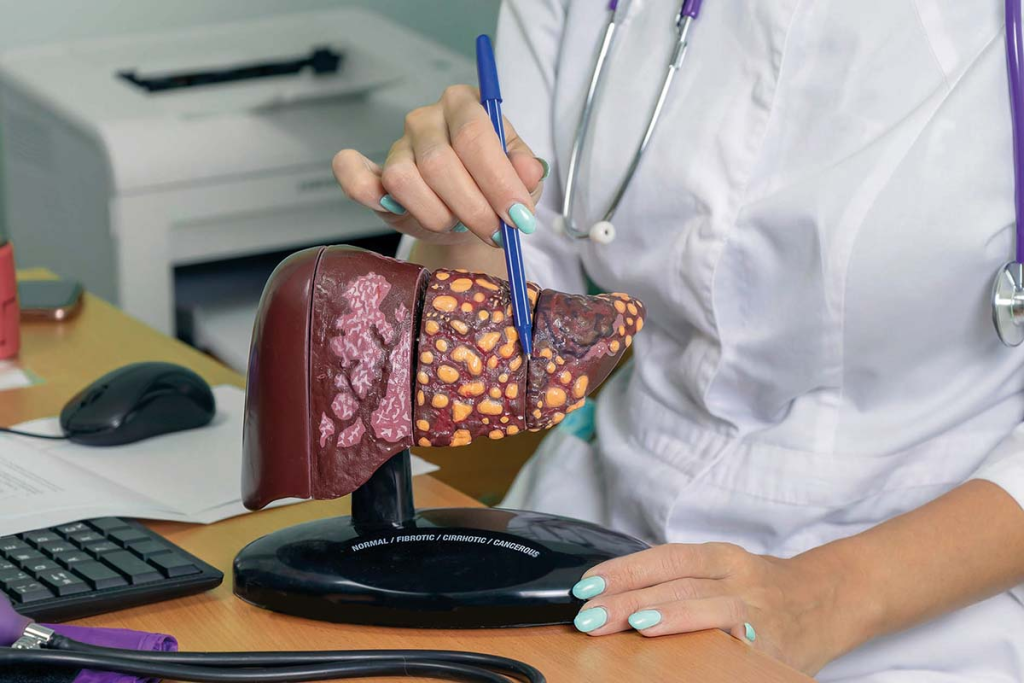Last Updated on October 20, 2025 by Batuhan Temel

Many people wonder if hepatoblastoma genetic, a rare liver cancer in kids, has a genetic link. Studies show that 20% of hepatoblastoma cases are linked to genetic syndromes and mutations. Conditions like familial adenomatous polyposis (FAP) and Beckwith-Wiedemann syndrome (BWS) raise the risk of this disease.
A study on the National Institutes of Health’s website found that specific genetic mutations can greatly affect the risk of hepatoblastoma.
It’s important to understand the genetic factors of hepatoblastoma for early detection and treatment. By spotting genetic syndromes and mutations, doctors can offer better screening and care for kids.
Learning about hepatoblastoma is key to catching it early and treating it well. We’ll look into what it is, how common it is, and how it shows up in kids. This will give you a full picture.
Hepatoblastoma is a serious liver tumor that mainly affects kids. It’s the top liver cancer in young people, making up about 1% of all cancers in kids. It happens in 1“2 out of every million kids under 15.
Hepatoblastoma’s frequency changes a bit in different groups, but it’s rare. Studies on its causes have shown it’s a mix of genetics and environment.
Hepatoblastoma can show up in many ways, but often as a big belly or swelling. Kids might feel pain in their belly, lose weight, or not want to eat. Doctors use scans like ultrasound, CT, or MRI to see the tumor.
They also check blood for alpha-fetoprotein (AFP) levels. High AFP levels are common in these patients, but not all have them. Doctors use scans, blood tests, and looking at biopsy samples to confirm it.
Getting a diagnosis early is vital for good treatment and better chances for kids. We stress the need for a team effort in treating this complex disease.
Most cases of hepatoblastoma happen by chance. But a big part of them is linked to genetic syndromes. This makes us wonder about the disease’s hereditary side and its impact on families.
Hepatoblastoma can be either hereditary or sporadic. Hereditary cases are tied to genetic syndromes that raise the risk of liver cancer. On the other hand, sporadic cases don’t have a family history or genetic link.
About 20% of hepatoblastoma cases are caused by genetic conditions. Syndromes like Beckwith-Wiedemann syndrome and familial adenomatous polyposis (FAP) increase the risk. Knowing these genetic links helps find and screen high-risk people.
The “20% rule” shows that 20% of hepatoblastoma cases are linked to genetic syndromes. This highlights the role of genetics in the disease.
It’s key to know these genetic connections. It helps manage the risk of hepatoblastoma in families and guides research into the disease’s genetics.
Some genetic conditions raise the risk of hepatoblastoma, a rare liver cancer in kids. We’ll look at genetic syndromes linked to this cancer. This will help us understand the genetic causes and what it means for treatment.
Beckwith-Wiedemann syndrome is a genetic disorder that increases the risk of tumors, including hepatoblastoma. Children with this syndrome are at a higher risk of getting hepatoblastoma. This means they need regular check-ups and tests.
An expert says, “Beckwith-Wiedemann syndrome raises the risk of childhood tumors like Wilms tumor and hepatoblastoma. This is because of changes in genes on chromosome 11p15.5.”
“The risk of tumor development in Beckwith-Wiedemann syndrome is multifactorial, involving both genetic and epigenetic alterations.”
Familial adenomatous polyposis is a genetic condition that also raises the risk of hepatoblastoma. FAP causes many colorectal polyps, which can turn into colorectal cancer if not treated. This shows why genetic screening is key for families with a FAP history.
FAP is caused by mutations in the APC gene, which controls cell growth and division. The connection between FAP and hepatoblastoma highlights the need for thorough genetic testing and monitoring.

Trisomy 18, or Edwards syndrome, is a chromosomal condition linked to a higher risk of hepatoblastoma. Other chromosomal issues might also lead to this rare liver cancer.
We know that genetic counseling and testing are vital for families with these conditions. They help in early detection and can improve outcomes for kids at risk of hepatoblastoma.
Somatic mutations in the Wnt/β-catenin pathway are common in hepatoblastoma. They are key to understanding this pediatric liver cancer.
Up to 90% of hepatoblastoma tumors have Wnt/β-catenin pathway issues. This pathway is vital for cell growth and differentiation.
The Wnt/β-catenin pathway is essential for liver health. Problems in this pathway can cause tumors. In hepatoblastoma, mutations in key genes are often the cause.
The Wnt/β-catenin pathway issues in hepatoblastoma include:
CTNNB1 gene mutations are found in 60“70% of hepatoblastoma cases. These mutations cause β-catenin to build up in the nucleus. This leads to the activation of genes that help cells grow and survive.
The high rate of CTNNB1 mutations shows how important the Wnt/β-catenin pathway is in this disease. Studying these mutations can help find new treatments.

Research on hepatoblastoma tumors’ genetic changes is growing. By studying these changes, we can find new ways to treat the disease. This could lead to better outcomes for patients.
Understanding hepatoblastoma risk involves looking at both genetic and non-genetic factors. We’ve covered the genetic side before. Now, let’s see how non-genetic factors can affect the risk of getting this cancer.
Studies show that low birth weight and prematurity raise the risk of hepatoblastoma. Kids born very early or with very low birth weight are at higher risk. This is because they face many health issues early on, including a higher chance of cancer.
It’s key to watch these children closely for any signs of cancer early on.
Environmental factors and epigenetic changes also play a part in hepatoblastoma. Epigenetics changes how genes work without changing the DNA. These changes can be caused by things like what the mother eats during pregnancy or exposure to chemicals.
Some research links certain toxins or maternal exposures to a higher risk of childhood cancers, including hepatoblastoma. While we’re learning more, it’s clear that both genetics and environment play a role in the risk.
The mix of genetic and non-genetic factors in hepatoblastoma shows how complex this disease is. More research is needed to find better ways to prevent and catch it early.
Genetic testing is key in assessing the risk of hepatoblastoma. It helps us understand genetic predispositions. This knowledge is vital for early detection and effective treatment.
Genetic testing is advised for those with a family history of hepatoblastoma or related genetic syndromes. For example, kids with Beckwith-Wiedemann Syndrome or Familial Adenomatous Polyposis (FAP) are at higher risk. Studies show that finding genetic mutations linked to these syndromes can greatly help in managing the disease.
“Knowing the genetic syndromes linked to hepatoblastoma can guide screening and management,” say experts. This can lead to better patient outcomes.
There are several genetic testing methods:
The right testing method depends on the situation and suspected genetic syndrome. For example, NGS is great for finding mutations in the CTNNB1 gene, often linked to hepatoblastoma.
Understanding genetic test results is complex. It involves knowing the mutations found and their implications. For instance, mutations in the CTNNB1 gene are common in hepatoblastoma. Knowing the specific mutation helps in making treatment plans.
It’s also important to think about the emotional impact of genetic testing on families. Genetic counseling is vital. It offers support and guidance as families deal with their test results.
By using genetic testing in risk assessment, we can better detect and treat hepatoblastoma in children.
Children at risk for hepatoblastoma need careful monitoring. This is done through established screening protocols. These protocols help find the disease early, which can lead to better treatment results.
Alpha-fetoprotein (AFP) monitoring is a key screening method. AFP is a liver protein. High levels can mean hepatoblastoma is present. We suggest regular AFP tests for at-risk kids.
AFP monitoring is a non-invasive and relatively simple procedure. It’s great for checking high-risk kids. But it’s important to look at results with other health signs too.
Imaging is also key in screening for hepatoblastoma. The main imaging methods are:
Imaging protocols should be tailored to the individual child’s risk profile and clinical history. High-risk kids might need more frequent scans.
Screening frequency and duration depend on the child’s risk factors and health history. Generally, we suggest:
It’s important to weigh the benefits of early detection against the risks and burdens of screening. We work with families to create personalized screening plans that meet their child’s needs.
Genetic profiling is changing how we treat hepatoblastoma. It makes treatments more precise and effective. By studying the genetic makeup of tumors, we can find specific mutations to guide our treatment.
Targeted therapies are a big step forward in treating hepatoblastoma. These therapies target specific genetic mutations that cause tumors to grow. For example, tumors with CTNNB1 gene mutations, found in about 60-70% of cases, can be treated with therapies that block the Wnt/β-catenin pathway. Clinical trials are exploring how well these targeted therapies work.
Targeted therapies can be more effective and have fewer side effects than traditional chemotherapy. They directly target the genetic causes of tumors. This can lead to better patient outcomes and fewer long-term complications.
In cases linked to genetic syndromes like Beckwith-Wiedemann Syndrome or Familial Adenomatous Polyposis (FAP), surgery is key. These syndromes have complex genetic and clinical features that need a team effort to manage.
For patients with these syndromes, surgery planning must consider the risk of multiple tumors or other cancers. Preoperative imaging and genetic testing are vital for making surgical decisions. Our team works with surgeons, geneticists, and other specialists to create detailed treatment plans for each patient.
The genetic makeup of hepatoblastoma affects prognosis. Patients with certain genetic mutations may have different outcomes than those without. For instance, tumors with CTNNB1 mutations may have a better prognosis with the right treatment.
Knowing these genetic differences helps us give more accurate prognoses to families. It also allows us to tailor follow-up care to each patient’s needs. Ongoing research is helping us understand how genetics impacts prognosis and treatment response.
Hepatoblastoma genetic research is on the verge of a new era. This is thanks to advances in genetic markers and treatments. We are finding new ways to diagnose, treat, and prevent this disease.
Genetic technologies are evolving fast, changing how we see hepatoblastoma. Next-generation sequencing and other new methods help find new genetic markers. These are key to early detection and understanding risk.
Also, artificial intelligence and machine learning are making genetic research better. They help us analyze complex data, predict outcomes, and create personalized treatments.
The future of treating hepatoblastoma is in gene therapy and precision medicine. As we learn more about the disease’s genetic causes, we can make targeted treatments. These treatments aim to fix the disease at its source.
Gene therapy is very promising for fixing genetic problems that cause hepatoblastoma. Precision medicine will let us tailor treatments to each patient’s genetic makeup. This could lead to better results and fewer side effects.
As we look ahead, it’s vital to keep investing in genetic research. We need to work together with researchers, doctors, and patients. This way, we can bring new treatments to those affected by hepatoblastoma faster.
We’ve looked into how genetics and hepatoblastoma are connected. We found that genetics plays a big role in this liver cancer in kids. Both inherited conditions and random genetic changes can increase the risk of getting this cancer.
Genetic causes of hepatoblastoma are complex. They include inherited conditions like Beckwith-Wiedemann Syndrome and Familial Adenomatous Polyposis. Also, random genetic changes in the Wnt/β-catenin pathway, like in the CTNNB1 gene, are important. Knowing these genetic factors helps us spot kids at higher risk and start early screenings.
As we learn more about the genetics of hepatoblastoma, we can improve treatments. This includes using targeted therapies and precision medicine. By understanding the genetic risks, we can help patients and give families important health information about their kids.
Hepatoblastoma is a rare liver cancer in children. Most cases happen by chance, but some are linked to genetic syndromes or mutations. This shows there’s a genetic link.
Certain genetic syndromes raise the risk of getting hepatoblastoma. These include Beckwith-Wiedemann syndrome, Familial Adenomatous Polyposis (FAP), and Trisomy 18.
Certain genetic syndromes raise the risk of getting hepatoblastoma. These include Beckwith-Wiedemann syndrome, Familial Adenomatous Polyposis (FAP), and Trisomy 18.
Somatic mutations, like those in the Wnt/β-catenin pathway and the CTNNB1 gene, are common in hepatoblastoma. They play a big role in the disease’s growth.
Yes, non-genetic factors like low birth weight and prematurity can increase the risk. Environmental factors might also play a part.
Genetic testing can spot people at higher risk due to genetic syndromes or mutations. This leads to early screening and better chances of treatment success.
At-risk kids get regular alpha-fetoprotein tests and imaging. The schedule depends on current guidelines.
Yes, knowing the genetic makeup of hepatoblastoma helps tailor treatments. It might include targeted therapies and specific surgeries.
New genetic markers and technologies are on the horizon. Gene therapy and precision medicine could lead to better treatments for hepatoblastoma.
The genetic link can affect how well a patient does. Some genetic syndromes or mutations might change treatment results and survival rates.
Knowing the genetic side of hepatoblastoma is key to diagnosis and treatment. It helps doctors give personalized care, which could improve patient outcomes.
Subscribe to our e-newsletter to stay informed about the latest innovations in the world of health and exclusive offers!
WhatsApp us